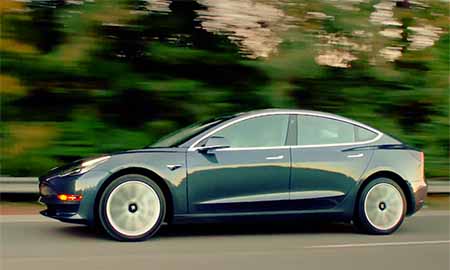Just like many other automakers, Elon Musk’s Tesla has high expectations of the Chinese market. The company was planning to build a factory in the country but has been reportedly grappling with the issue to finalize a plan without the participation of a local partner as required by local laws.
In June 2017, the US company announced it was in talks with Shanghai government and later in October, it claimed to have inked a deal with the local authorities to build a manufacturing plant in the city’s free-trade zone, reported Wall Street Journal. Months later, the deal hasn’t been finalized as China’s government wants Tesla to work with local partners through a joint venture while the American company wishes for a wholly-owned factory, according to Bloomberg. A joint venture with local partners will ask Tesla to split profits and potentially share technologies.
Pursuant to current rules, even the cars made by Tesla in Shanghai’s free-trade zone would still count as imported and incur the 25 percent tariff, though it would help slash the company’s production costs and make Tesla cars more affordable. Currently, a Tesla Model X costs somewhere around USD 132,000 (RMB 835,000), roughly 50 percent more expansive than in the U.S. At the same time, local competitors such as automaker Geely, BAIC Motor and BYD, as well as emerging startups including Byton and Tencent-backed NIO, all seeks to produce comparably cheaper models and bridge the technological gap.

China is the world’s largest auto market and also the largest EV market. The country is working to scrub air pollution and has in place incentives such as subsidies, less traffic restriction and shorter queue time for a license to prompt a shift to EV. In China, where 449,431 battery-powered EVs were sold, Tesla holds a mere 3 percent market share, selling 14,883 cars, according to data compiled by Bloomberg. The Chinese government seeks to raise the EV sales to seven million a year by 2025, making the market well primed for growth.
On November 1, 2017, Musk said on the earnings call for the company’s Q3 results, “There’s a rough target of starting production in the next three years, and it would be serving the China market and some of the surrounding region.” Musk didn’t mention his plans in China when speaking with analysts during the company’s latest earnings call earlier this month.
The company is said to be struggling to meet the production target of its Model 3 sedans which is expected to be a more affordable choice compared with its other luxury models. In Q4 2017, Tesla reported USD3.3 billion in revenue and USD771 million in loss. The California-based company also reported a negative free cash flow of USD 276.6 million.
In Europe, Tesla has a facility in the Netherlands where it assembles parts manufactured in California. It claims to have 31 retail stores in China and over 1000 superchargers.
